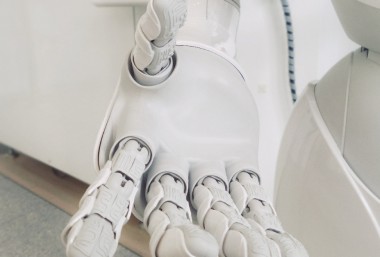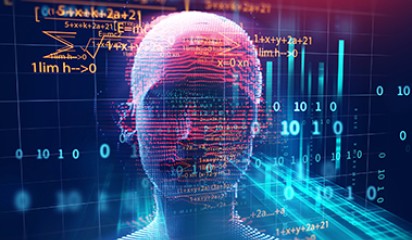On 30 July 2021, the Federal Court of Australia held that an artificial intelligence (AI) system could be validly named on a patent application. In a historic decision (Thaler v Commissioner of Patents [2021] FCA 879) of the Australian Federal Court, Beach J delivered a judgement that the owner of the AI system can derive title to the invention from a non-human i.e. an AI inventor.
This decision is interesting. On the one hand, this decision is a step towards reforming a patent system which often lags behind the pace of technology evolution. It provides opportunities for filing patent applications for inventions created by AI systems. The use of AI and AI systems are rapidly growing in various sectors, so allowing the patent system to keep up with modern technological advancements and incentivising inventions generated by or using such technologies seems like a positive step. However, on the other hand, this decision raises several questions and uncertainties such as ownership/entitlement of a patent, where to draw the line when it comes to non-human generated inventions, a definition of 'a person skilled in the relevant art' for inventive step assessments etc.
Background
Dr Stephen Thaler, the appellant in the case, claims that his artificial intelligence system DABUS (Device for the Autonomous Bootstrapping of Unified Sentience) could produce two inventions without any human contribution.
According to Dr Thaler, DABUS is implemented with chains of connected neural networks. The inventions it has apparently devised are a container with a fractal profile and a signal beacon with a fractal flickering pattern for catching attention.
Dr Thaler originally filed European patent applications for the two inventions in 2018, subsequently filing a PCT application in 2019. These applications listed DABUS as the inventor and Dr Thaler as the applicant. The PCT application entered the national phase in Australia in 2020 as AU2019363177, but the Deputy Commissioner of Patents at IP Australia (Australian Patent Office) held that an AI cannot be listed as an inventor because it is not a person. Therefore, the Deputy Commissioner held that the application should become lapsed for failing to meet the formality requirements.
The EPO, USPTO and UK IPO (the patent offices of Europe, the US and the UK, respectively) have taken similar positions on Dr Thaler’s applications in their jurisdictions. A corresponding patent application was granted in South Africa, but South African patent applications do not undergo substantive examination procedures.
Dr Thaler successfully appealed the Deputy Commissioner’s decision to the Federal Court in Australia, so the outcome in Australia has been more favourable to the applicant than in other countries.
The arguments
At the formalities stage, IP Australia doesn’t need to consider whether DABUS is an actual inventor, only to ensure that an inventor has been properly named. Although the Court could decide the former issue, Beach J was tasked only with deciding whether the Patents Act 1990 of Australia (the Act) allows for an AI inventor, not to assess the inventive contribution of DABUS. Therefore, Dr Thaler’s statements regarding DABUS’ capabilities seem to have been taken for granted in the judgement.
The word ‘inventor’ is not defined in the Act, but it is an essential part of s 15(1) of the Act which reads:
Subject to this Act, a patent for an invention may only be granted to a person who:
(a) is the inventor; or
(b) would, on the grant of a patent for the invention, be entitled to have the patent assigned to the person; or
(c) derives title to the invention from the inventor or a person mentioned in paragraph (b); or
(d) is the legal representative of a deceased person mentioned in paragraph (a), (b) or (c).[1]
The Deputy Commissioner opined that s 15(1) is not capable of sensible operation if the inventor were a machine, as there is no person who could be granted a patent.[2] This reasoning is largely based on the fact that the law does not allow a machine to assign property under s 15(1)(b) and hence under s 15(1)(c). The Commissioner of Patents supported this reasoning in the Federal Court decision, arguing that the ordinary meaning of inventor is inherently human.
Beach J seems critical of the Commissioner’s reliance on ‘old millennium’ dictionary definitions of the word inventor, positing that words are only “pictures of ideas upon paper”.[3] His honour draws a parallel with the evolution of the concept of manner of manufacture, suggesting that perhaps the concept of ‘inventor’ must evolve as well to avoid a situation where otherwise patentable inventions might be excluded from patentability for having no inventor.[4]
Beach J notes that because the word ‘inventor’ is not defined in the Act, it has its ordinary meaning as an agent noun.[5] His honour reasons that an agent can be a person or a thing, as illustrated by similar words such as “lawnmower” or “dishwasher”, such that if an AI system is the agent that invents it could be described as an “inventor”.[6] His honour also notes that the word “computer” might originally have been used to describe persons but is now used to describe machines that carry out the same function.[7]
Beach J discusses at length s 2A of the Act, the objects clause of the Act, which states in part that the patent system is meant to promote economic wellbeing through technological innovation.[8] His honour reasons that allowing computer inventorship would incentivise the development of ‘creative machines’ and that it could promote disclosure and commercialisation of computational inventions.[9] His honour also asserts that machines are already autonomously or semi-autonomously generating patentable results, such that allowing them inventorship would recognise the reality.[10] Interestingly s 2A was added in the Act only recently in February 2020, so this case is one of only a few that uses this section to support a decision.
The Commissioner took the position that it cannot be said that Dr Thaler “derives title to the invention from the inventor” per s 15(1)(c), as DABUS cannot hold title or move it.[11] However, Beach J determines that Dr Thaler can still derive title to the invention despite DABUS not being capable of assignment.[12] His honour reasons that Dr Thaler derives possessory title by virtue of having custody and control over the output of its creation. His honour concludes that this means an AI, or indeed some other non-human, can validly be named as the inventor on a patent application despite not being able to validly be an applicant or a grantee, and that the human applicant may still derive title for example via ownership of the inventor.[13]
What are the implications?
The implications of the decision may be limited by the current state of technology, as it remains to be seen whether a claim of AI inventorship would hold up to closer scrutiny. For this to happen, it may require that a third party decides to undertake opposition or revocation proceedings against a patent/application with an alleged AI inventor. At this point inventorship issues might be used as a ground for invalidation.
In theory, if AI becomes capable of generating numerous patentable inventions, this decision could facilitate a boom of AI-generated patent applications in Australia – for better or worse. However, even if technology reaches this point, we may see that the resulting applications still name human inventors, leaving it up to third parties to prove a lack of human contribution (the AI will certainly not be complaining). Indeed, if AI is already autonomously generating patentable inventions, then this could be happening already.
The decision could equally apply to any non-human inventor, even if it is not an AI. Therefore, some applicants may test the waters by listing CAD programs, mechanical devices or even animals as inventors, arguing that such non-humans have somehow made an inventive contribution to the claimed invention. IP Australia may have to accept this at least at the formalities stage, or come out with a clear policy on where to draw the line when it comes to non-human inventors.
Another implication of this decision could be on inventive step assessments. Under Section 7(2) of the Act, an invention involves an inventive step when compared with the prior art base unless the invention would have been obvious to ‘a person skilled in the relevant art’ in light of the common general knowledge as it existed (whether in or out of the patent area) before the priority date of the relevant claim.[14] So, to make an assessment on whether the claimed invention involves an inventive step, the Act requires the invention to be non-obvious to ‘a person skilled in the relevant art’. If AI can be named an inventor, arguably it could also be considered ‘a person skilled in the relevant art’ relating to AI-generated inventions. Considering that some inventions may be non-obvious to a skilled person but can very well be obvious to an AI inventor, it remains to be seen how this decision will influence the tests for inventive step assessments, especially for AI-related patents/applications.
The Commissioner of Patents has on 27 August 2021 appealed this decision, therefore there is a chance that the decision will be reversed to bring Australia in line with other jurisdictions on this inventorship issue, or alternatively the decision could be upheld. Only time will tell, but we will keep you updated on the progress.
[1] Patents Act 1990, s 15(1).
[2] Thaler v Commissioner of Patents [2021] FCA 879 at [87]-[89].
[3] At [15] and [147]-[154].
[4] At [16] and [121].
[5] At [120].
[6] At [120].
[7] At [149].
[8] At [122]-[134].
[9] At [122]-134].
[10] At [122]=[134].
[11] At [106].
[12] At [197]-[198].
[13] At [222]-[226].
[14] Section 7(2).





